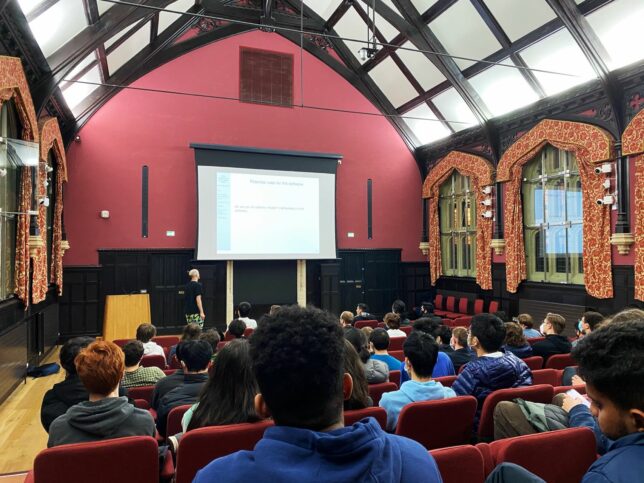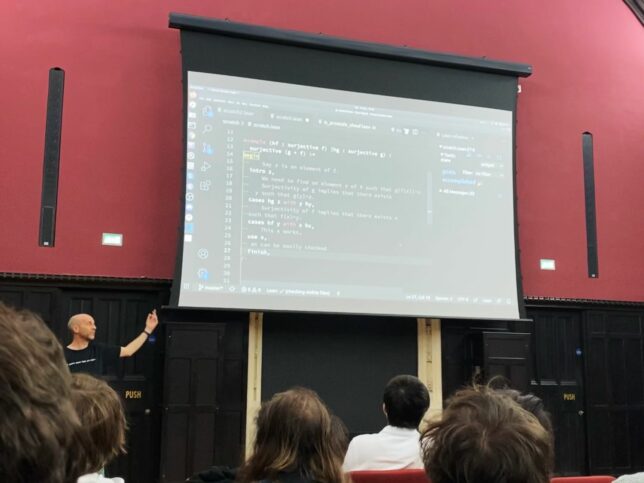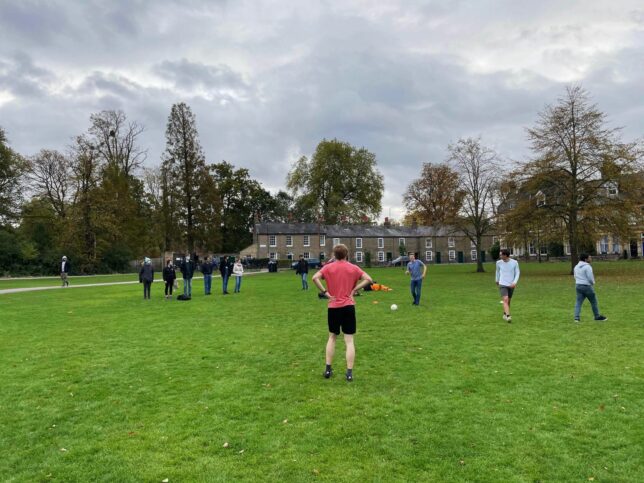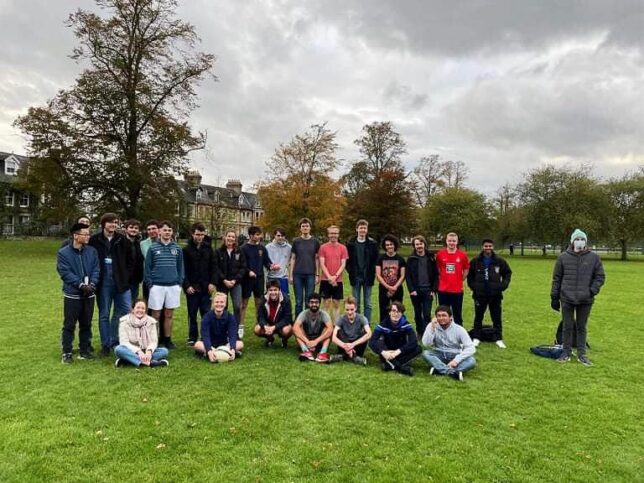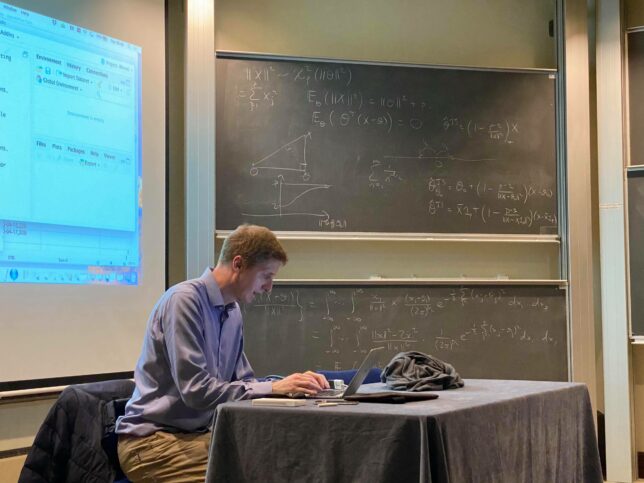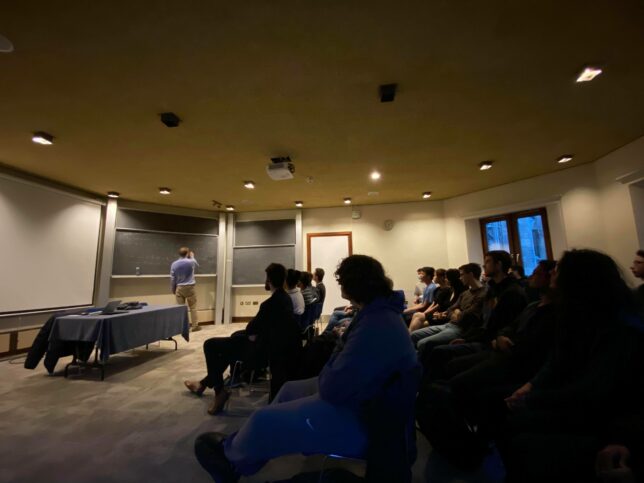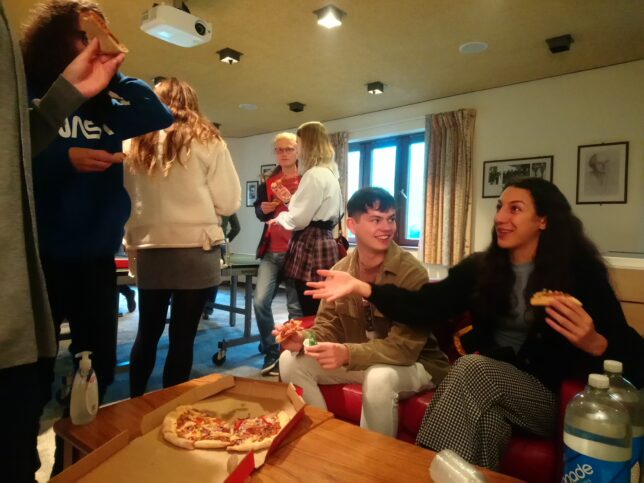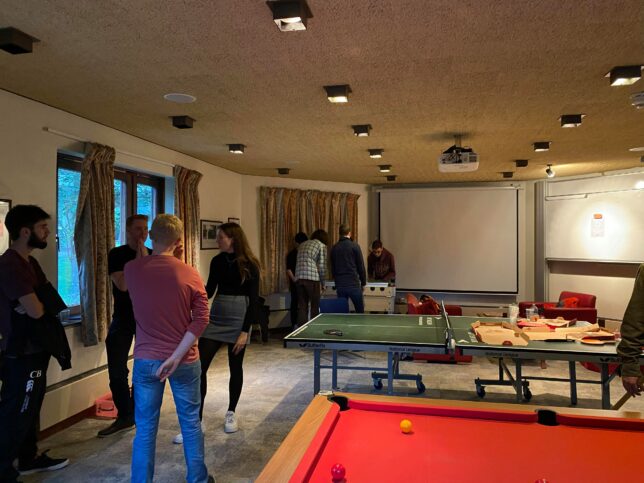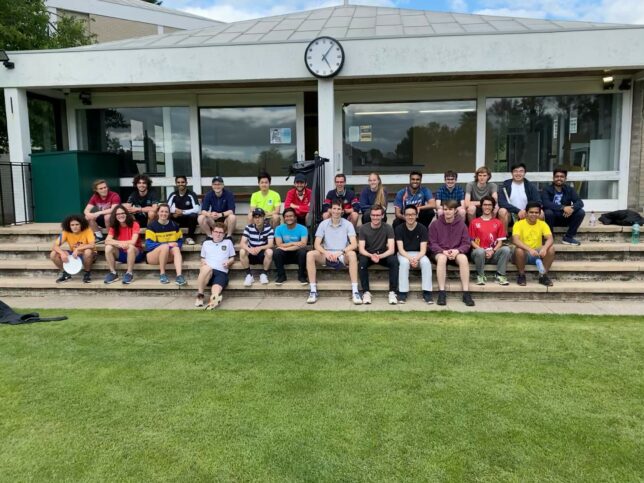Lent Term
AGM
Friday, 26th March, 15:00
The Adam’s Society Annual General Meeting was held and a new committee elected for 2021-2022. Looking forward to more events, virtual or in person, in the coming year! The committee page will be updated shortly.
Truth by Prof. Michael Potter
Tuesday, 23rd February, 18:00
I am pleased to invite you to our last talk of this term. If any of you are tired of traditional mathematics by now, fear not, it is going to be something special. Our speaker is Prof. Michael Potter from the Faculty of Philosophy and the title of his talk is Truth. Please see the abstract below :
What does it mean to call a mathematical theorem (or indeed any other proposition) “true”? Frank Ramsey began while he was a maths undergraduate at Cambridge to propose a prima facie deflationary answer to this question. “There is no separate problem of truth,” he wrote a few years later, “but only a linguistic muddle.” But a few years after that Tarski proved a metamathematical result which seems to prove the opposite: so far from being eliminable, truth is indefinable. I shall explain both views and try to determine whether they are reconcilable.
How (not) to test your way out of a pandemic, using Part I maths, by Jordan Skitrall
Tuesday, 9th February, 18:00
The COVID-19 pandemic has made its presence felt in all of our lives, and has introduced the public to a well-known threshold phenomenon in disease dynamics: whether disease spread can be controlled or proceeds completely out of control depends exquisitely on small effects when the average number of people being infected by each case (R) sits around 1. One of the ways people have sought to affect R is by testing people, isolating infectious people from infecting others, and tracing the people they may already have infected. A simple discourse has arisen – sadly reminiscent of the early days of most screening programmes in history – that more testing is always better. But is it? I shall talk through some of my own work and show that a simple model of the effect of screening can be built using nothing more than early-undergraduate probability theory. I shall discuss the thinking required to construct such a model, and show how one goes back and forth between an understanding of the factors in a system and the underlying mathematics. Finally, we shall reach a working model of the effect of screening and show that some of the major factors affecting its success are those that are hardest for a mathematician to predict and control – those of human behaviour.
Morse Theory in Finite and Infinite Dimensions, by Dr Jonny Evans (Lancaster University)
Tuesday, 26th January, 20:00
If you put a drop of water on a sphere, there are exactly two points where it will stay put: the top, where it will sit if precisely balanced, and the bottom, where it will form a drip. If you try the same on a torus, you will find four such “critical points”. This difference is because the torus and the sphere are topologically distinct. Morse theory takes this observation further, and relates the topology of a space to the critical points of functions defined on it. We will think about some examples, some finite- and some infinite-dimensional.
Pizza and Game Night
Saturday, 23rd January, 19:00
An opportunity to talk to fellow Johnians, play games and eat a Pizza on us.
Michaelmas Term
PhD Talks: Poset Saturation Problems & Algebraic Geometry by Maria Ivan and Patrick Kennedy-Hunt
Tuesday, 24th November, 18:00
The final Adams Society Talk of the term is happening on Tuesday! We’ll have the chance to hear from two of our very own PhD Students: Maria Ivan and Patrick Kennedy-Hunt. They’ll both be giving short talks on their research areas, Poset Saturation Problems and Algebraic Geometry respectively, aimed at an undergraduate audience.
It promises to be a great chance to hear from mathematicians who were in your shoes not very long ago!
Title: “Poset Saturation Problems” – Maria Ivan
Abstract: “A poset is short for a partially ordered set. The most common example of a poset is the power set of [n] with the partial relation given by inclusion. Given a fixed poset P we say that a family F of subsets of [n] is P-free if there is no induced copy of P formed by elements of F. We further say that F is P-saturated if it is P-free and, for any other set X subset of [n], the family F\cup \{X\} contains an induced copy of P. The size of the smallest P-saturated family is called the induced saturation number of P, denoted by sat^*(n,P).The natural question is can we determine the saturation number for simple posets, or at least their order of magnitude? The posets that have been actively researched are the antichain, the diamond (one maximal element, one minimal element and two incomparable elements), and the butterfly (two maximal and two minimal elements). Until recently, the questions for all these three posets were open, despite substantial improvements. In 2020 the butterfly question was completely solved by two independent papers, the first of which I am the author of and proves the lower bound of n+1, with the second providing an example of size about 6n. These two papers combined give that the saturation number for the butterfly is of order n.In this talk I will introduce the audience to the field of poset saturation and focus on the butterfly poset, especially on the key ideas of my proof for the lower bound. There will be lots of diagrams which will hopefully make all the steps natural and easy to follow. I am looking forward to seeing you all there.
Title: “Algebraic Geometry” – Patrick Kennedy-Hunt
Abstract: Algebraic Geometry is an important area of modern pure maths in which we study the zero sets of polynomial equations. In this talk I will describe a visual construction in the relatively new tropical algebraic geometry. These `tropical curves’ are easier to think about than polynomials but remember lots of key information. We will use our construction and a result of Milkhalkin to sketch an unusual take on (which will not quite amount to a proof) Bezout’s theorem. Bezout’s theorem is one of the most famous results in algebraic geometry: it says two polynomials of degree d and e share d\times e common zeroes in projective space.
Algebra and Geometry in the Tropics, by Dr Dhruv Ranganathan
Tuesday, 10th November, 18:00
We are pleased to announce our second talk of the term, this time by Dr Dhruv Ranganathan. The title is “Algebra and Geometry in the Tropics”, abstract below:
There is a remarkable collection of ideas, with roots in high energy theoretical physics, that links the world of manifolds, polynomials, and string theory to the world of polygons, combinatorics, and graph theory. The bridge is ultimately based on the notion of an absolute value. While all of us understand the concept of absolute values of numbers, the ideas of tropical geometry give us an absolute value of geometry itself. We’ll explore what on earth this might mean, and stare at a large number of poorly drawn pictures to understand what makes this odd sounding concept a powerful new tool in modern mathematics.
On Conway’s Numbers and Games, by Dr Jessica Fintzen
Tuesday, 27th October, 18:00
Our first talk of the term will be by Dr Jessica Fintzen and hosted on zoom. If you would like to attend, please sign up for the facebook event here and we will send you further details closer to the date.
Fresher’s Squash, by the Adams Society
Tuesday, 13th October 2020, 16:00-17:30
Join as at Gazebo 3 (in Merton Court next to Cripps) for an opportunity for the new members to meet and greet the other mathmos in college.
As you’re all probably very bored of by now, there are various of restrictions which we need to abide by, so please through the following guidelines and stick to them:
- 1m distancing at all times
- Wear a mask
- Do not attend if you have symptoms of COVID-19
Easter Term
Quiz night, by the Adams Society
Monday, 4th May 2020, 7pm
A mathematical themed quiz on zoom. A chance to chat with your fellow mathematical friends at St John’s from home.



